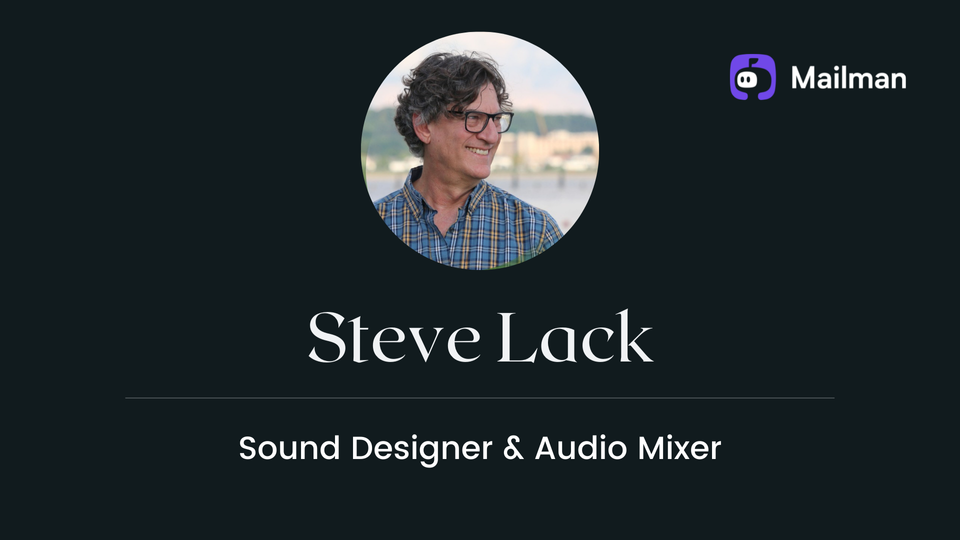Structuring the day around Pomodoro

If you're into productivity, you likely would have heard about the Pomodoro Technique.
Let me give you a quick refresher on "What is the Pomodoro Technique?"
In this technique, you break your workday into 25-minute chunks separated by five-minute breaks. These intervals are referred to as pomodoros. After about four pomodoros, you take a longer break of about 15 to 20 minutes.
Steve Lack, Sound Designer & Audio Mixer, uses a slightly different version of this technique, and then structures his entire day around it.
Let's hear it from him:
"I use the Pomodoro technique to structure my day. It really helps to not get distracted and get the important stuff done.
But I use a modified version of it as I feel 25 minute sprints don't work for me as a musician, so I use 45-15 min blocks to get stuff done. That means I'll work for 45 mins and then take a 15 minute break.
Before starting a sprint, I have a clear goal set for what I want to accomplish in this sprint, then I get after it.
In the morning I just get up and schedule my Pomodoro sprints for the day. That's the first thing I do. It gives a nice structure to my day.
Then I've my email deliveries scheduled on Mailman in between these Pomodoro sprints. So I can tackle my emails after I've done some amount of undistracted focused work. This way I stay on top of everything without compromising on my quality of work."
If you're someone who struggles with procrastination and distractions, the Pomodoro Technique might just be the perfect fix for you.
In this episode, Steve Lack, talks about his beginnings, how he started a web development business at the start of the internet, working at Disney, a typical day in his life, structuring his day around Pomodoro, closing the day well, and much more!

Steve introduces himself
Hi I'm Steve, Sound Designer, and post-production Audio mixer for television, advertising, and podcasts. I spend most of my time recording narration, creating sound effects, editing dialogue for television shows. I've also been doing a lot of podcast work lately. Podcasts are a big thing these days, I create music and sound design for podcasts as well. Mostly I work in the non-fiction, science, and documentary space.
Talking about some of my work, recently I've been doing a series called "Expedition Shipwreck". Also, a series on science channel called "If we built it today", and another series called "Extreme Engineering". In the past I've worked on "American Chopper" and "Deadliest Catch". I started my career as a music producer and worked on the 1st 5 seasons of Seinfeld. I've had the opportunity to work on some really fun projects.
The other hat that I wear is managing a web-hosting and support company. I started this company while I was working at Disney. I had a night-shift so worked from 6 PM to 2 AM in the morning. So I'd wake up at around 11 O'clock and have the whole day to myself. I'm not the kind of person who can spend time doing nothing.
So I started a side gig. I didn't want to do anything music or sound related, as that's what I did at my job. It was a web development business, in the early 2000s. That is, exactly when people were starting to you the value of having a website. My web development business was focused on my colleagues in the television business. That's how it started, to today when it has evolved into a web-hosting and support business.
The beginnings
As a kid I moved out to LA, as a drummer. Most kids those days wanted to be a Rockstar. I worked with a studio in LA, was touring with a circus for some time.
At that time I realized, I enjoyed being on the other side of the glass where the sound engineers sit, than the recording side of the studio. So I made a transition to music production, and that lead me to post-production audio. I did that for a few years.
A typical day
I don't really have a fixed schedule. Much of that is because I work in the music industry. I'm used to staying up late and prefer night shift whenever I can.
But lately I've been getting up early. In the morning I do technical and routine things, like uploading the files, moving things around, finding a particular sound effect. If I've to work with a client, I'll get on a call with them in the morning to sync up. I do these till around 11:30 AM, then I have my first creative block of time which lasts till about 2:00 PM. My creativity goes down in the afternoon, so at that time I tend to emails, personal stuff or business work.
My best creative hours start somewhere around late afternoon or early evening at 4:00 PM. Sometimes I start working on a project in the evening, then go on till late night until I get it done. The next day I can wake up late but still make the 5 PM deadline.
As you can see I'm pretty flexible with my schedule. I try to live by my energy instead of working by the clock.
Structuring the day using Pomodoro
I use the Pomodoro technique to structure my day. It really helps to not get distracted and get the important stuff done.
But I use a modified version of it as I feel 25 minute sprints don't work for me as a musician, so I use 45-15 min blocks to get stuff done. That means I'll work for 45 mins and then take a 15 minute break.
Before starting a sprint, I have a clear goal set for what I want to accomplish in this sprint, then I get after it.
In the morning I just get up and schedule my Pomodoro sprints for the day. That's the first thing I do. It gives a nice structure to my day.
Then I've my email deliveries scheduled on Mailman in between these Pomodoro sprints. So I can tackle my emails after I've done some amount of undistracted focused work. This way I stay on top of everything without compromising on my quality of work.
Closing the day
At the end of each day, I take 15-20 minutes to look at my emails, my lists, my calendar. Then I move things around planning things for the day ahead.
Sometimes I'm able to do this entire exercise in 5 mins, but then let's say I've to send a quick email - I'll just do it right there instead of putting it on the list for tomorrow. That makes sure these tiny tasks don't remain looming around until tomorrow. So this entire exercise takes 20-30 mins, and then I'm good for the day.
Doing this exercise at the end of the day, really helps me calm my brain of all the random things that are moving around. Then I can get a peaceful sleep at night.
Forming new habits
For the past 2 years, I've built taking a walk into a habit. Everyday, no matter what, I take my 4-mile walk. I listen to some audiobook while I'm walking. That's how I forget that I'm walking, and just enjoy the audiobook.
Another habit I've built has been sticking to the Pomodoro technique, that's something I've been doing since last summer, and it has worked great for me. I use this technique for 5 days a week. On the weekend, I usually go sailing with my wife, if the weather's nice.
One extra hour
If I get one extra hour in my day, I'd spend it reading. I already read a lot, but I'd like to read more. I've over 300 books in my Kindle. My wife and I have this running joke that we don't have enough time to read. So yeah I'll use that extra hour to read for pleasure.
How to reach Steve?
You can learn about my television and podcasting work at stevelackaudio.com. You can also learn about my web hosting and infrastructure business at genlack.com.
Reach me on LinkedIn. Or you can email me steve@stevelack.com





